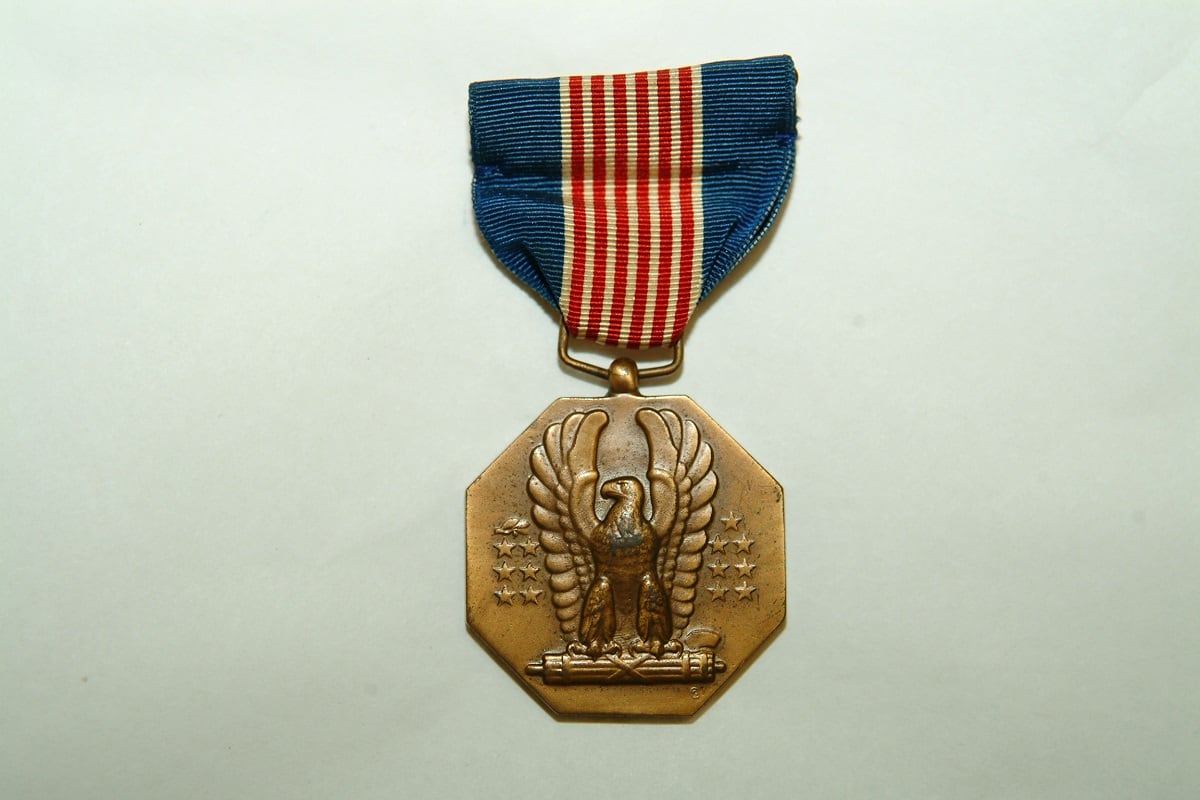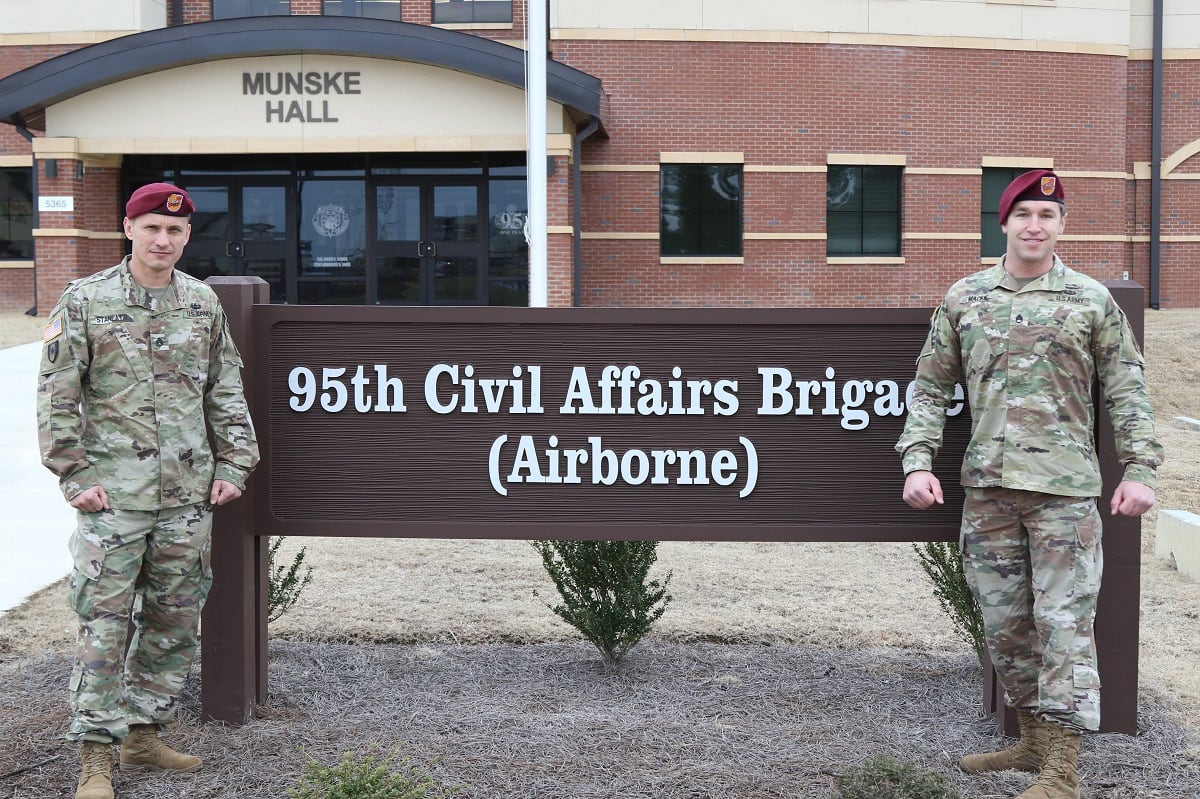Two Fort Bragg soldiers had just finished a routine training jump and were on chute detail when they heard a radio transmission that one of the paratroopers had landed in a tree.
Staff Sgt. Daniel Johan Mackie and Staff Sgt. Valentin Staneata continued their work collecting parachutes. But as the hours wore on, they heard over the radio that the jumper was stuck in the tree, and rescue efforts had been unsuccessful.
“I started to get concerned when I heard a transmission over the radio that the paratrooper’s legs started to go numb,” Mackie said.
The night jump was on Jan. 24, and the temperature had dropped below freezing.
Mackie and Staneata, both civil affairs specialists with the 92nd Civil Affairs Battalion, 95th Civil Affairs Brigade at the North Carolina post, were worried for the paratrooper’s safety and health.
“When we heard that, me and my battle buddy Staff Sgt. Staneata looked at each other and said, ’Hey, let’s go get the paratrooper,’” Mackie said.
Staneata said they heard over the radio that the recovery team was having a hard time because the paratrooper landed in a pretty inaccessible place.
RELATED

When the two soldiers arrived on the scene about a mile away, they discovered the paratrooper was about 50 or 60 feet up in an area full of thick underbrush on the edge of the landing zone.
At this point, the paratrooper had been stuck for about four hours. Emergency response vehicles were unable to get close to the tree because of the underbrush, and the tree was so high that the ladder couldn’t reach the stuck soldier.
Mackie and Staneata climbed up the ladder, then the tree, until they reached the paratrooper. The responders on the ground had stuffed Mackie’s uniform with warm clothing that he could give to the jumper.
The two soldiers, who both graduated from Ranger School, decided a pulley system would be the best way to safely lower the paratrooper.
Staneata called to those on the ground to pass up the materials they’d need to create the pulley system.
Mackie wrapped the rope around the tree as an anchor to secure the pulley to lower the paratrooper to the ground.
“Without a strong anchor, the paratrooper would just fall,” Mackie said, adding that his Army training helped in this situation.
One of the firefighters had a carabiner, so Mackie looped that through the pulley and the paratrooper’s harness.
“From airborne training, we know how to safely anchor our equipment,” Staneata said. “We used the D ring and not just any anchor point on the harness.”
The two soldiers worked together to safely create the system and lower the paratrooper to the ground.
“Both Staneata and I have training that would make us better suited to tackle this problem,” Mackie said. “Being in civil affairs, you have to be very adaptive and innovative. And Ranger school teaches us a lot about climbing up and down mountains, teaching us different knots, how to use ropes and create systems to recover people.”
“In Ranger school, we learned how to repel and work with ropes and harnesses,” Staneata said.
The rescue took about 15 minutes, and the paratrooper was then taken by medevac to the hospital.
Once Mackie and Staneata got down from the tree, they went back to chute detail.
RELATED

Sgt. 1st Class Ronald Ecklund, the primary jumpmaster that night, said it was a routine airborne proficiency jump, except it was at night.
Because of that, there might have been some confusion on the direction and drift, he said.
“The paratrooper was still in the drop zone — just in a part of the woodline where trees were very high in the air, and the undergrowth was actually very thick and abundant,” Ecklund said. “That’s what made it very difficult for recovery assets outside of using soldiers and ladders.”
Ecklund said they requested a medevac to drop a hoist down and extract the paratrooper, but Mackie and Staneata prevailed before the medevac arrived.
The paratrooper, who declined an interview, didn’t suffer any injuries during the incident.
“Our main concern was that it was really cold outside, and the jumper was hung in the tree for a long period of time,” Ecklund said, adding that the rest of the jump was canceled once they found out a paratrooper was stuck.
“Roughly 160 actually jumped, but we were manifested for 300,” he said.
Mackie, a U.S. citizen raised in Sweden, moved to the United States in 2003 and joined the Army in 2010. Staneata, originally from Romania, moved to the U.S. in 2006 and joined the Army about two months later. Before moving to the States, he served in the Romanian army.
Staneata recalled a story in which a Romanian soldier helped rescue Staneata’s father.
During one winter, Staneata’s father capsized in a boat, but a soldier intervened.
“[The soldier] didn’t hesitate,” he said. “Because of that soldier, my father’s life was saved.”
“That’s what we do as soldiers,” Staneata said. “We analyze quickly, take safety measures, and then action.”
Charlsy is a Reporter and Engagement Manager for Military Times. Email her at cpanzino@militarytimes.com.




